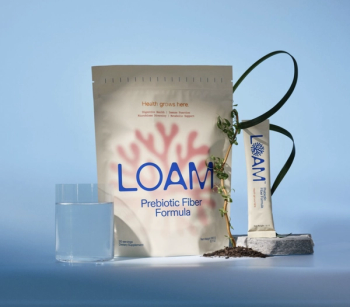
Popular probiotics: The latest on Lactobacilli and Bifidobacteria
An overview of the latest Lactobacilli and Bifidobacteria research.
Lactobacilli and Bifidobacteria are the most well-known genera of probiotic organisms that normally occur in the human gastrointestinal and genitourinary tracts. Many of the individual species for these two probiotic genera play important roles in promoting good health. These probiotics are also used therapeutically for the purpose of recolonizing the gut where they may have been depleted for one reason or another (e.g., antibiotic therapy, poor diet, etc.).
With the understanding that the body relies on these probiotics for multiple functions—including the absorption of nutrients, preventing colonization by pathogenic (harmful) bacteria, and metabolizing foods and certain drugs—recolonization is an important consideration. While probiotic strains are found in some fermented food products—e.g., yogurt, sour cream, kefir, sauerkraut, kombucha (fermented) tea and fermented soy (miso, tempeh), kimchi, etc.—they are more popularly consumed as an encapsulated, powdered, and even gummy supplement.
Is Probiotic Deficiency a Real Thing?
First off, can you really have a deficiency of probiotics?
Given that probiotics are not nutrients with a daily value, probiotic deficiencies in the human body are not always a topline nutrition subject. However, in the journal Current Opinion in Infectious Diseases, researchers noted that some inflammatory conditions of the gut are thought to be caused, at least in part, by “a relative deficiency of bifidobacteria”.1
In addition, there are negative ramifications to deal with when probiotics are present in insufficient quantities. An example of this is small intestine bacterial overgrowth syndrome (SIBO), a condition associated with the increase in pathogenic microorganisms. This occurs, in part, due to the fact that there are insufficient numbers of friendly, probiotic organisms to inhibit the spread of the harmful, pathogenic organisms.2 The result is an increase in chronic diarrhea, translocation of bacteria and their toxins from intestine to the blood, as well as intestinal absorption disorders causing vitamin B12–deficiency anemia, low levels of various vitamins, and protein deficiency.
A major strategy for decontamination of the small intestine in this instance is the use of probiotics (both after antibiotics and independently), which suppress the opportunistic pathogenic organisms, protect the mucous coat, improve digestion, and arrest diarrhea.3,4 The effectiveness of probiotics in correcting some of the previously mentioned nutrient deficiencies has also been seen in research where vitamin B12 and folate deficiencies where corrected in children supplemented with Lactobacillus acidophilus.5
So, in answer to the question, I’d say that a relative probiotic deficiency is a real thing.
Probiotics Use for a Wide Range of Disorders
Of course, probiotic supplementation has value beyond the prevention and treatment of probiotics deficiency. The fact is that probiotics have also been advocated for use in a wide range of disorders, with strong evidence to support efficacy. In fact, probiotics are now used extensively for this purpose6, and a significant amount of research has been conducted on different probiotic species in the Lactobacilli and Bifidobacteria genera for different purposes. Following is a brief overview of that research.
The Lactobacillus Genus
The Lactobacillus genus includes a group of lactic acid–producing probiotic species7,8 that make up many of the 400 normal probiotic species in the human body.7,9,10,11,12 Among the more important of these are L. acidophilus, L. rhamnosus, L. casei, and L. plantarum.
Lactobacillus acidophilus
Lactobacillus acidophilus from yogurt has been shown to decrease the incidence of recurrent bacterial vaginosis.13 Laboratory research has also shown that L. acidophilus can inhibit the growth of the H. pylori bacterium14, which is implicated in the development of ulcers. In a irritable bowel syndrome, L. acidophilus has been shown to improve abdominal pain, bloating, number and quality of stools, and general physical state.15,16 A combination of L. acidophilus and L. casei was found to be effective in the treatment of bacterial overgrowth.17 In addition, L. acidophilus produces substances called bacteriocins, which act as natural agents against undesirable microorganisms.18 Furthermore, L. acidophilus has been shown to correct the increase of gram-negative bacteria which occurs following the use of broad-spectrum antibiotics given in the treatment of acute or chronic diarrhea.19-21
Lactobacillus rhamnosus
Lactobacillus rhamnosus is among the probiotics with the greatest number of proven benefits. Part of the reason for this may be that L. rhamnosus attaches to intestinal epithelial cells better than some other Lactobacillus species.22 Furthermore, randomized double-blind studies have provided evidence of L. rhamnosus effectiveness for the treatment and prevention of different types of diarrhea23, including antibiotic diarrhea24, chemotherapy-induced diarrhea25, Clostridium difficile diarrhea26, rotaviral diarrhea27, and traveler’s diarrhea28.
Lactobacillus casei
Lactobacillus casei may help reduce the frequency29 or severity30 of acute diarrhea in children aged 6-24 months. L. casei also adheres better to urogenital cells than other Lactobacillus species17, which may translate to preventing attachment by pathogenic bacteria. As noted previously, a combination of L. acidophilus and L. casei may be effective in the treatment of small intestinal bacterial overgrowth.31
Lactobacillus plantarum
Lactobacillus plantarum has been shown to reduce the severity of chemotherapy-induced enterocolitis32 (an inflammation of both the small and large intestine). Also, L. plantarum has been shown to inhibit attachment of E. coli to human colon cells.33 In a randomized, placebo-controlled trial16, L. plantarum was effective in significantly and rapidly reducing abdominal pain and flatulence in irritable bowel patients. At 12-month follow-up, those same patients maintained their improvement in overall gastrointestinal function. This probiotic may also be used to help prevent traveler’s diarrhea.16
The Bifidobacterium Genus
Bifidobacteria normally colonize in the human colon.34,35 Like Lactobacillus species, Bifidobacteria also produce lactic acid. These appear to be the most important organisms in the intestine in helping to create a microbial barrier to infection. Specifically, Bifidobacteria produce antimicrobial substances that are effective against many harmful gram-positive and gram-negative bacteria.34,36
Bifidobacterium longum
Research indicates that supplementation with Bifidobacterium longum can reduce stool frequency, abdominal discomfort, and stool clostridial spore count in antibiotic-associated diarrhea37, although other research did not find the same significant reduction in diarrhea.24 Also, B. longum may ease gas and flatulence.38
Bifidobacterium breve
A combination of Bifidobacterium breve, Bifidobacterium bifidum, and Lactobacillus acidophilus was shown to help prevent relapse and reduce disease activity in patients with ulcerative colitis when used as an adjunct to treatment with medication.39,40
Conclusion
Probiotic organisms of the Lactobacilli and Bifidobacteria genera normally occur in human beings and play important roles in promoting good health. Furthermore, probiotic deficiency—at least relative probiotic deficiency—is a real thing, and the use of a good probiotic supplement can help prevent and treat it. In addition, a significant amount of research has been conducted on different probiotic species in the Lactobacilli and Bifidobacteria genera, demonstrating that probiotic supplementation has value for a wide range of health purposes.
About the Author
Gene Bruno, MS, MHS, RH (AHG), is a certified nutritionist and registered herbalist with 42 years of dietary supplement industry experience. With a master’s degree in nutrition and a second master’s degree in herbal medicine, he has a proven track record of formulating innovative, evidence-based dietary supplements. Mr. Bruno currently serves as both the vice president of scientific and regulatory affairs at
References
- Subramanian S. “
Bacteria in the pathogenesis of inflammatory bowel disease .” Current Opinion in Infectious Diseases, vol. 19, no. 5 (October 2006): 475-484 - Bures J et al. “
Small intestinal bacterial overgrowth syndrome.” World Journal of Gastroenterology , vol. 16, no. 24 (June 28, 2010): 2978-2990 - Lykova EA et al. “
[Bacterial overgrowth syndrome in the small intestine: pathogenesis, clinical significance and therapy tactics] .” Eksp Klin Gastroenterol, vol. 6 (2005): 51-57 - Bondarenko VM et al. “
[Microecological aspects of small intestinal bacterial overgrowth syndrome] .” Zh Mikrobiol Epidemiol Immunobiol, vol. 6 (September-October 2006): 57-63 - Mohammad MA et al. “
Plasma cobalamin and folate and their metabolic markers methylmalonic acid and total homocysteine among Egyptian children before and after nutritional supplementation with the probiotic bacteria Lactobacillus acidophilus in yoghurt matrix .” International Journal of Food Sciences and Nutrition, vol. 57, no. 7-8 (November-December 2006): 470-480 - Boyle RJ et al. “
Probiotic use in clinical practice: What are the risks? ” The American Journal of Clinical Nutrition, vol. 83, no. 6 (June 2006): 1256-1264 - Casas IA et al. “
Validation of the probiotic concept: Lactobacillus reuteri confers broad-spectrum protection against disease in humans and animals. ” Microbial Ecology in Health and Disease, vol. 12, no. 4 (2000): 247-285 - Fujisawa T et al. “
Taxonomic study of the Lactobacillus acidophilus group, with recognition of Lactobacillus gallinarum sp. nov. and Lactobacillus johnsonii sp. nov. and synonymy of Lactobacillus acidophilus group A3 (Johnson et al. 1980) with the type strain of Lactobacillus amylovorus (Nakamura 1981). ” International Journal of Systematic Bacteriology, vol. 42, no. 3 (July 1992): 487-491 - McGroarty JA. “
Probiotic use of lactobacilli in the human female urogenital tract. ” FEMS Immunology and Medical Microbiology, vol. 6, no. 4 (April 1993): 251-264 - Bruce AW et al. “
Intravaginal instillation of lactobacilli for prevention of recurrent urinary tract infections .” Canadian Journal of Microbiology, vol. 34, no. 3 (March 1988): 339-343 - Gupta K et al. “
Inverse association of H2O2-producing Lactobacilli and vaginal Escherichia coli colonization in women with recurrent urinary tract infections .” Journal of Infectious Diseases, vol. 178, no. 2 (August 1998): 446-450 - Madsen KL et al. “
Lactobacillus species prevents colitis in interleukin 10 gene-deficient mice .” Gastroenterology, vol. 116, no. 5 (May 1999): 1107-1114 - Shalev E et al. “
Ingestion of yogurt containing Lactobacillus acidophilus compared with pasteurized yogurt as prophylaxis for recurrent candidal vaginitis and bacterial vaginosis .” Archives of Family Medicine, vol. 5, no. 10 (November-December 1996): 593-596 - Rasic J et al. “Antimicrobial effect of Lactobacillus acidophilus and Lactobacillus delbrueckii subsp. bulgaricus against Helicobacter pylori in vitro.” Arch Gastroenterohepatol 1995;14:158-160.
- Halpern GM et al. “
Treatment of irritable bowel syndrome with Lacteol Fort: A randomized, double-blind, cross-over trial .” The American Journal of Gastroenterology, vol. 91, no. 8 (August 1996): 1579-1585 - Nobaek S et al. “
Alteration of intestinal microflora is associated with reduction in abdominal bloating and pain in patients with irritable bowel syndrome .” The American Journal of Gastroenterology, vol. 95, no. 5 (May 2000): 1231-1238 - Gaon D et al. “
Effect of Lactobacillus strains (L. casei and L. acidophilus strains cereal) on bacterial overgrowth-related chronic diarrhea .” Medicina (Brazil), vol. 62, no. 2 (2002): 159-163 - Barefoot SF et al. “
Detection and activity of Lactacin B, a bacteriocin produced by Lactobacillus acidophilus .” Applied and Environmental Microbiology, vol. 45, no. 6 (June 1983): 1808-1815 - Hentges DJ, ed. Human intestinal microflora in health and disease. New York: Academic Press, 1983.
- Shahani KM et al. “
Role of dietary lactobacilli in gastrointestinal microecology .” The American Journal of Clinical Nutrition, vol. 33, Suppl. 11 (November 1980): 2448-2457 - Friend BA et al. “
Nutritional and therapeutic aspects of lactobacilli .” Journal of Applied Nutrition, vol. 36, no. 2: 125-152 - Oberhelman RA et al. “
A placebo-controlled trial of Lactobacillus GG to prevent diarrhea in undernourished Peruvian children. ” The Journal of Pediatrics, vol. 134, no. 1 (January 1999): 15-20 - Goldin BR et al. “
Clinical indications for probiotics: An overview .” Clinical Infectious Diseases, suppl. 46 (February 1, 2008): S96-S100 - McFarland LV. “
Meta-analysis of probiotics for the prevention of antibiotic associated diarrhea and the treatment of Clostridium difficile disease. ” The American Journal of Gastroenterology, vol. 101, no. 4 (April 2006): 812-822 - Osterlund P et al. “
Lactobacillus supplementation for diarrhoea related to chemotherapy of colorectal cancer: A randomised study .” British Journal of Cancer, vol. 97, no. 8 (October 22, 2007): 1028-1034 - Pochapin M. “
The effect of probiotics on Clostridium difficile diarrhea .” The American Journal of Gastroenterology, vol. 95, suppl. 1 (January 2000): S11-3 - deRoos NM et al. “
Effects of probiotic bacteria on diarrhea, lipid metabolism, and carcinogenesis: A review of papers published between 1988 and 1998 .” The American Journal of Clinical Nutrition, vol. 71, no. 2 (February 2000): 405-411 - Hilton E et al. “
Efficacy of Lactobacillus GG as a diarrheal preventative in travelers .” Journal of Travel Medicine, vol. 4, no. 1 (March 1, 1997): 41-43 - Pedone CA et al. “
Multicentric study of the effect of milk fermented by Lactobacillus casei on the incidence of diarrhoea .” International Journal of Clinical Practice, vol. 54, no. 9 (November 2000): 568-571 - Pedone CA et al. “
The effect of supplementation with milk fermented by Lactobacillus casei (strain DN-114 001) on acute diarrhoea in children attending day care centres .” International Journal of Clinical Practice, vol. 53, no. 3 (April-May 1999): 179-184 - Reid G et al. “
Examination of strains of lactobacilli for properties that may influence bacterial interference in the urinary tract .” The Journal of Urology, vol. 138, no. 2 (August 1987): 330-335 - Wagner RD et al. “
Biotherapeutic effects of probiotic bacteria on candidiasis in immunodeficient mice .” Infection and Immunity, vol. 65, no. 10 (October 1997): 4164-4172 - Mack DR et al. “Probi
otics inhibit enteropathogenic E. coli adherence in vitro by inducing intestinal mucin gene expression .” The American Journal of Physiology, vol. 276, no. 4 (April 1999) - Lievin V et al. “
Bifidobacterium strains from resident infant human gastrointestinal microflora exert antimicrobial activity. ” Gut, vol. 47, no. 5 (November 2000): 646-652 - Macfarlane GT et al. “
Probiotics and prebiotics: Can regulating the activities of intestinal bacteria benefit health? ” BMJ, vol. 318, no. 7189 (April 10, 1999): 999-1003 - Rastall RA. “
Bacteria in the gut: Friends and foes and how to alter the balance .” Journal of Nutrition, vol. 134, suppl. 8 (August 2004): 2022S-2026S - Colombel JF et al. “
Yoghurt with Bifidobacterium longum reduces erythromycin-induced gastrointestinal effects .” Lancet, vol. 2, no. 8549 (July 4, 1987): 43 - Jiang T et al. “
Improvement of lactose digestion in humans by ingestion of unfermented milk containing Bifidobacterium longum .” Journal of Dairy Science, vol. 79, no. 5 (May 1996): 750-757 - Ishikawa H et al. “
Randomized controlled trial of the effect of bifidobacteria-fermented milk on ulcerative colitis .” Journal of the American College of Nutrition, vol. 22, no. 1 (February 2003): 56-63 - Kato K et al. “
Randomized placebo-controlled trial assessing the effect of bifidobacteria-fermented milk on active ulcerative colitis .” Alimentary Pharmacology & Therapeutics, vol. 20, no. 10 (November 15, 2004): 1133-1141
Newsletter
From ingredient science to consumer trends, get the intel you need to stay competitive in the nutrition space—subscribe now to Nutritional Outlook.





